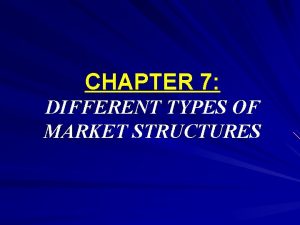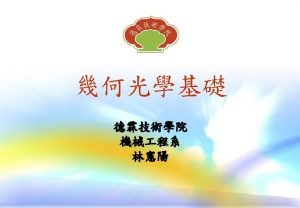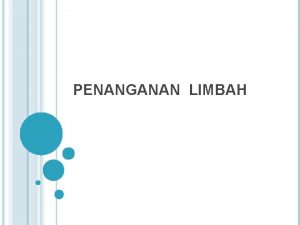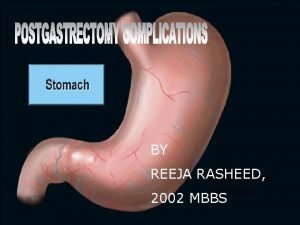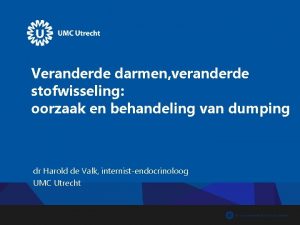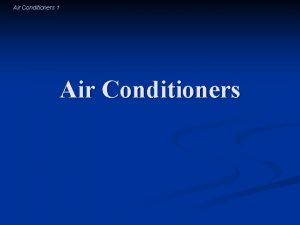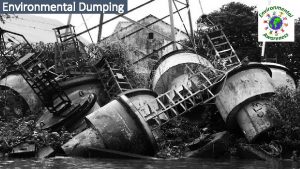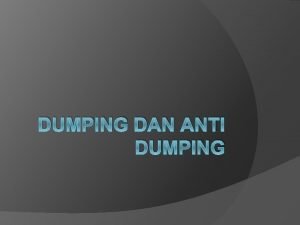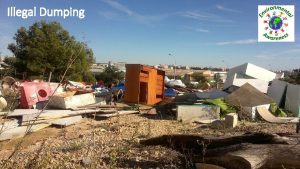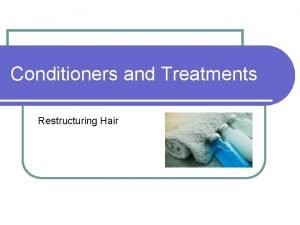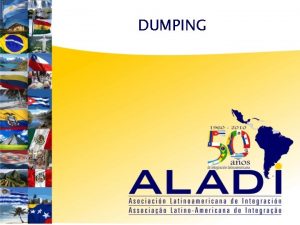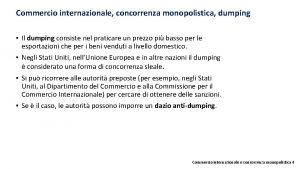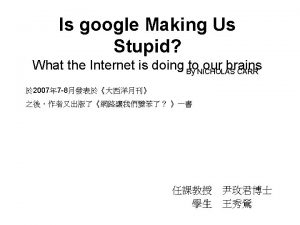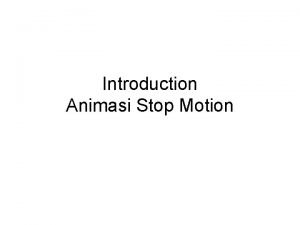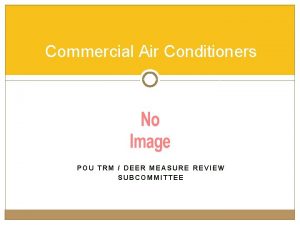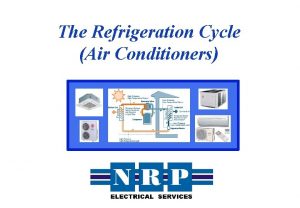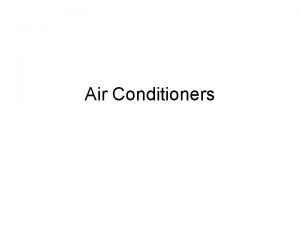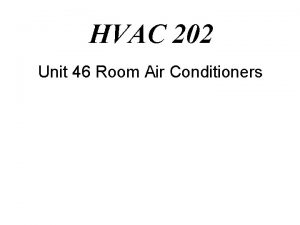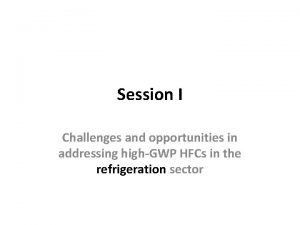Stop Environmental Dumping of HighGWP Air Conditioners that




















- Slides: 20

Stop Environmental Dumping of High-GWP Air Conditioners that Waste Energy, Harm Families and Communities, Pollute Air and Force Climate Change! Stephen O. Andersen, Suely Carvalho, Tad Ferris, Durwood Zaelke, Romina Picolotti, Marco Gonzalez Meeting of the Parties of the Montreal Protocol 6 November 2018 Quito, Ecuador

Anti-Dumping Side Event Preview • Obsolete and Inefficient HCFC-22 and HFC-410 A Room ACs are Being Dumped in A 5 Markets • Dumping Harms AC Owners, Local Communities, Nations, and Climate • Money spent on electricity is wasted on imported fuel and power plants • Money saved on electricity is spent locally • Local spending recirculates, creating local jobs and sustainable prosperity • Parties Can Stop Dumping Using Tools Developed by IGSD Consistent with International Trade Rules

What is Environmental Dumping? Environmental dumping is the practice of exporting to another country or territory products that: 1. Contain hazardous substances, 2. Have environmental performance lower than is in the interest of consumers or that is contrary to the interests of the local and global commons, and/or 3. Undermine the ability of the importing country to fulfill international environmental treaty commitments.

Historic Examples of Dumping • Exporting hazardous product waste from a developed country for irresponsible and often illegal disposal in a developing country • Exporting old, inefficient used cars and trucks that create more pollution to developing countries where they are sold at a premium • Dumping old, inefficient and/or used refrigeration and air conditioning equipment containing ozonedepleting or climate-forcing chemical substances that do not meet the exporting country’s energy and environmental standards • Exporting illegal appliance and electronic waste by fraudulently categorizing it as “reusable”

Environmental Dumping Is Not New to the Montreal Protocol • Recall Viet Nam’s success in stopping dumping of products containing ozone-depleting substances, leading to the “Viet Nam Leadership Pledge” in 1995 • Recall Thailand’s import restrictions on refrigerators using CFCs • Recall the wisdom of the Montreal Protocol trade provisions, which prevented Parties from shifting their ODS operations to non-Parties

Who Does Environmental Dumping Harm? • Dumping is a North-South, North-North, and South phenomenon. • Dumping harms all where it occurs, particularly those most vulnerable to harms associated with such equipment, such as countries with vulnerable electricity grids and/or high energy prices. • Excess energy consumption pollutes the air breathed by the most vulnerable people living closest to dirty power plants. • Knowledge of exploitation is the first step to recovery.

Why Does Stopping Dumping Matter? • Dumping is unfair and harmful to countries impacted, and especially detrimental to attempts to control these products under the Montreal Protocol • Stopping dumping is critical in the effort against climate change: the IPCC 1. 5 Report notes that anti-dumping measures are a regulatory tool for enhancing energy efficiency

Dumping Inefficient High-GWP ACs in Brazil (1) • Higher-efficiency room ACs tested and certified for Brazil are not made available in Brazilian markets • Current manufacturing of low-efficiency ACs using obsolete HCFC-22 and HFC-410 A increase energy demand consumer energy bills • Dumping of inefficient products brings disadvantages to consumers and global climate consequences to all people

Dumping Inefficient High-GWP ACs in Brazil (2) • Brazilian customers currently prefer to buy products labelled as high efficiency but MEPs and labelling programmes require revision to correctly inform consumer choice • The false impression that customers freely choose inefficiency is an insult to environmental concern of developing country citizens

Powerful Anti-Dumping Policy Tools • Featured in December 2018 Duke Environmental Law Journal (see link on Power. Point slide 14) • Made consistent with international trade rules by expert drafting • Applied alone or in unique combination, depending on the circumstances • Enhanced with traditional regulatory measures and incentives

Powerful Tools to Stop AC Dumping (1) 1. Prior informed consent (voluntary and traditional, treaty-based) 2. Green supply chain guidelines or governmentindustry accords 3. Government procurement and buyers clubs 4. Registration of exporters and importers or import/export agents 5. Minimum energy performance standards 6. Product labeling requirements

Powerful Tools to Stop AC Dumping (2) 7. Pre-shipment verification of conformity 8. Environmental taxes and incentives 9. Environmental dumping tariffs 10. Prohibitions on import and local manufacture 11. Multilateral agreement(s) to phase out or phase down the production and consumption of unsustainable chemical substances and products

Takeaways • Environmental dumping can be stopped • Dumping damages the receiving country while generating profits for the exporters • Stopping environmental dumping has immediate economic development benefits • The Kigali Amendment is an opportunity to prevent environmental dumping of high GWP and energy-inefficient appliances • 11 IGSD tools to stop environmental dumping • Each country can choose tools that stop environmental dumping while harnessing maximum sustainable development benefits

Find the IGSD Anti-Dumping Toolkit: • The introduction is available online now here: law. duke. edu/scholarship/journals/articles/IGSD_Article_Sneak_Peek. pdf • Full article will be published in the Duke Environmental Law and Policy Forum in December. Check delpf. law. duke. edu/

IGSD welcomes partnerships with Parties seeking to stop dumping of obsolete and inefficient refrigerators, ACs, and thermal insulating foam made with obsolete HFCs and HCFCs Contact information: Stephen O. Andersen, IGSD Director of Research sandersen@igsd. org Tad Ferris, IGSD Senior Counsel tferris@igsd. org

Back up Slides

Access of parties operating under paragraph 1 of Article 5 of the Montreal Protocol to energy-efficient technologies in the refrigeration, air-conditioning and heat-pump sectors Submission by Rwanda on behalf of the African Group UNEP/Oz. L. Pro. WG. 1/40/CRP. 1, 13 July 2018 Noting the imminent entry into force of the Kigali Amendment to the Montreal Protocol, Recognizing the role of all United Nations bodies in supporting the global response to the threat of climate change and its increasing impacts worldwide, Acknowledging that the effective implementation of the Kigali Amendment will require additional efforts to reduce greenhouse gases and will give rise to the opportunity to address energy efficiency concerns and contribute to the reduction of indirect emissions of greenhouse gases, Cognizant that developing countries face the challenge posed by the pervasive entrance of inefficient, outdated and/or obsolete technologies into their markets, Recognizing the opportunities cited by the Technology and Economic Assessment Panel in volume 5 of its May 2018 report, where it is noted that several categories of enabling activities can potentially serve to bridge activities related to enhancing or maintaining energy efficiency with hydrofluorocarbon phase-down activities Decides: 1. To request financial support for Article 5 countries for the development and enforcement of policies/regulations to avoid the assembling and manufacturing of energy-inefficient refrigeration, air-conditioning and heat-pump equipment as well as its import and penetration into their markets; 2. To request the Meeting of the Parties to approve a window for funding demonstration projects in Article 5 countries that can provide information on costs and cost-effectiveness as well as practical experience to inform discussions and decisions on maintaining energy efficiency in the servicing sector; 3. To request the Executive Committee of the Multilateral Fund to develop guidelines for bulk procurement processes that will allow aggregation of demands for equipment with high energy efficiency and lower global warming potential at affordable prices; 4. To request the Technology and Economic Assessment Panel to include in its annual reports updates on the cost and availability of lower-global-warmingpotential refrigerants and energy-efficient equipment applicable to all, including high-ambient-temperature countries; 5. To request implementing agencies to facilitate the provision of targeted training on certification, safety and standards, awareness-raising and capacitybuilding that will assist Article 5 countries in maintaining and enhancing the energy efficiency of refrigeration, air-conditioning and heat-pump equipment.

Indicative Actions Taken to Prevent Environmental Dumping Year Jurisdiction Action taken 2013 Bhutan Mauritius Bhutan bans from 2013 the import of HCFC-based equipment. Mauritius bans from 1 January 2013 the import of appliances containing HCFCs (Consumer Protection Regulations). 2014 India passes a regulation in 2014 banning the import of HCFCs and limiting their use in various applications. 2014 Maldives Republic of Maldives bans HCFC-based equipment imports effective June 2014 South Africa bans from 1 July 2014 the import of new or used AC equipment and refrigerants containing HCFCs. 2015 EU EU bans from 1 January 2015 the use of recycled or reclaimed HCFCs to service RAC equipment. 2015 Indonesia bans from 1 January 2015 the use of HCFCs in various appliances and all imported goods.

Case Study: Inefficient Room Air Conditioners (RACs) • A 2017 study by Lawrence Berkeley National Laboratory* found that inefficient HCFC-22 room air conditioners dominate the market in many emerging economies, despite the fact they would be illegal to sell in most developed countries • This creates significant economic and environmental harm to local consumers, economies and electric grids: • AC ownership costs are unnecessarily high, depriving citizens of the added prosperity that would be realized if savings in electricity cost were spent locally; • Increased energy demand during the high ambient-temperature season forces expansion of electricity-generation capacity and increases in fuel consumption, taking away resources that could have been put to better use elsewhere; • Increased electricity generation, if from fossil fuel and biomass, emits carbon dioxide (CO 2) and other hazardous pollutants that damage human health, agriculture, and natural ecosystems; • Air pollution damage to human health decreases productivity and quality of life and increases healthcare costs; and • Air pollution damage to agricultural productivity increases hunger with consequences of malnutrition. Air pollution damage to natural ecosystems reduces global photosynthesis and carbon sequestration in soils with consequences for climate change. * Won Young Park, Nihar Shah, & Brian Gerke, Assessment of Commercially Available Energy-Efficient Room Air Conditioners Including Models with Low Global-Warming Potential (GWP) Refrigerants, EOL BERKELEY NATIONAL LABORATORY (2017), https: //eta. lbl. gov/sites/default/files/publications/assessment_of_racs_lbnl-_2001047. pdf.

Case Study: Inefficient HCFC-22 Room Air Conditioners (RACs) Some manufacturers worsen dumping by: • Selling RACs in export markets that are considerably less efficient and/or employ more environmentally damaging refrigerants than the products sold in the manufacturer’s country of origin • Selling RACs in export markets that are more expensive to own and operate than more efficient RACs produced by the same manufacturer • Withholding the most efficient RACs from sale in export markets on the false presumption that developing country consumers do not appreciate lower ownership costs and/or environmental benefits * Won Young Park, Nihar Shah, & Brian Gerke, Assessment of Commercially Available Energy-Efficient Room Air Conditioners Including Models with Low Global-Warming Potential (GWP) Refrigerants, EOL BERKELEY NATIONAL LABORATORY (2017), https: //eta. lbl. gov/sites/default/files/publications/assessment_of_racs_lbnl-_2001047. pdf.
 Tissue conditioners examples
Tissue conditioners examples Monopoly business examples
Monopoly business examples Phân độ lown ngoại tâm thu
Phân độ lown ngoại tâm thu Walmart thất bại ở nhật
Walmart thất bại ở nhật Gây tê cơ vuông thắt lưng
Gây tê cơ vuông thắt lưng Block av độ 2
Block av độ 2 Tìm vết của đường thẳng
Tìm vết của đường thẳng Sau thất bại ở hồ điển triệt
Sau thất bại ở hồ điển triệt Thơ thất ngôn tứ tuyệt đường luật
Thơ thất ngôn tứ tuyệt đường luật Hãy nói thật ít để làm được nhiều
Hãy nói thật ít để làm được nhiều Thơ thất ngôn tứ tuyệt đường luật
Thơ thất ngôn tứ tuyệt đường luật Tôn thất thuyết là ai
Tôn thất thuyết là ai Air higroskopis adalah
Air higroskopis adalah Aperture stop
Aperture stop One stop teacher shop
One stop teacher shop The stranger at our gate political cartoon meaning
The stranger at our gate political cartoon meaning Sd dumping
Sd dumping Metode open dumping adalah
Metode open dumping adalah Ejemplo de dumping
Ejemplo de dumping Billroth 2
Billroth 2 Dumping symptomen
Dumping symptomen

